Norman Lloyd, 90, is in only three scenes in In Her Shoes and is on-screen maybe seven or eight minutes, but his performance is one of the most poignant notes in a film that’s got more than a few of them.
It’s not one of those burn-through-the-screen performances (along the lines of, say, Beatrice Straight’s fight-with-Bill-Holden scene in Network). It’s more like a coaxer. You can sense Lloyd’s intellectual energy and zest for life despite his character’s withered state, and you can feel and admire the tenderness he shows to Maggie …tenderness mixed in with a little classroom discipline.
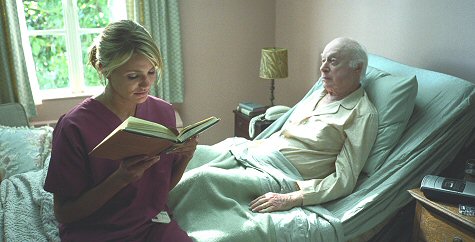
(l. to. r.) Cameron Diaz and Norman Lloyd, playing “the Professor,” considering the poetry of Elizabeth Bishop in In Her Shoes
He plays a sightless retired college professor who prods Diaz’s Maggie character, who is dyslexic and can’t read a billboard slogan without stumbling, into reading poetry to him — specifically a poem about loss and emotional guardedness by Elizabeth Bishop.
At first Maggie is reluctant, then she agrees to read to him…slowly, almost pain- fully…I have a dyslexic friend and she doesn’t read this slowly…but she gradually improves.
Then Lloyd prods her into explaining what she thinks of the poem. She tries to duck this, but Lloyd — using skills he’s picked up during a lifetime of teaching — won’t let her.
This isn’t just the heart of the scene — it’s a pivotal scene in the film. It’s the moment when Maggie turns the corner and starts taking steps to be someone a little better…because she starts believing in her ability to see through to the core of things, and in the first-time-ever notion that she has a lot more to develop and uncover within herself.
I know how cliched it sounds to say a character “turns a corner” and so on, but sometimes these moments happen in life. You just have to be able to hear the little voice in the back of your head that says, “You’ve taken a small step…you’ve just moved along.”
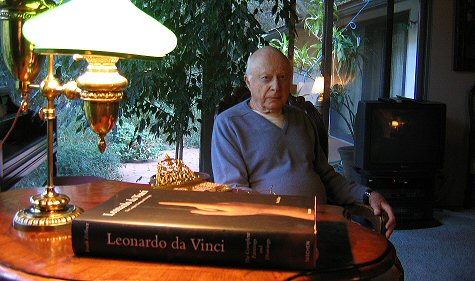
Norman Lloyd in his living room of his Brentwood home — Tuesday, 9.27, 5:45 pm.
I said Lloyd was in three scenes — he’s really in five.
There’s a brief scene near the end of the film in which Diaz and Lloyd’s grandson — a doctor — talk about him and then how Lloyd has spoken about her. Lloyd is “there,” so to speak, and like Bishop’s poem, the subtext is loss.
In the film’s final minutes Diaz reads another poem — this one by e.e. cummings — and this time with more confidence and feeling. And Lloyd is there again.
It’s funny, but I feel as if I’ve known Lloyd all my life via his performance in Alfred Hitchcock’s Saboteur, and now, in my mind (and everyone else’s, I’ll bet, once the film opens), he’s back again and on the map.
I’m not going into some Hollywood journalist suck-up routine when I say Lloyd ought to be handed a Best Supporting Actor nomination. He’s really earned it. It’s hard enough to make an impact like this with a fully-rounded part, but with only one scene to work with…well.
I called him yesterday morning and did a quick interview, and then I drove over to his place in Brentwood in the late afternoon to snap a couple of photos.
I want to be just like Norman Lloyd when I’m almost 91. He’s done everything, been everywhere and knows (or knew) everyone. And he’s healthy and spirited with the intellectual vigor of a well-educated 37 year-old.
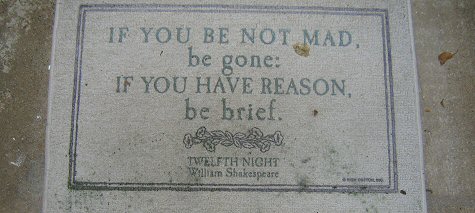
Lloyd has been acting since the `30s and producing since the `50s. He’s been directed on-stage by Orson Welles (in “Julius Caesar” and “Shoemaker’s Holiday”) and Elia Kazan, and on film by Hitchcock twice (Spellbound was the other film), and Jean Renoir (The Southerner), Charlie Chaplin (Limelight), Peter Weir (Dead Poet’s Society) and Martin Scorsese (The Age of Innocence).
He lives on a quiet sycamore-lined street in a beautiful ranch-style home, in front of which horses go clop-clopping by in the late afternoon. He was born in New Jersey and grew up talking like one of the Dead End kids, but since the ’30s he’s spoken with a refined mid-Atlantic accent (learned at the hand of acting teacher Eva Le Gallienne). He drives a beautiful black Jaguar and has a doormat with a quote from Shakespeare’s “Twelfth Night.”
And he plays tennis well enough to have competed two months ago in the finals of the DGA tennis tournament. (His doubles partner is 45 years younger.)
Last year Limelight Editions published Lloyd’s autobiography called “Stages: Of Life in Theatre, Film and Television.”
He was told about the In Her Shoes part by his agent, Merritt Blake, and went down to meet with Curtis Hanson and producer Carol Fenolen.
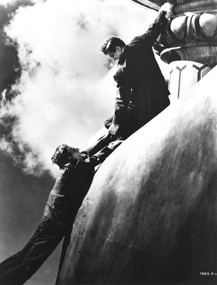
Lloyd (lower left) and Robert Cummings during finale in Alfred Hitchcock’s Saboteur
“I don’t ‘read’ for parts,” says Lloyd. “I myself have produced a great deal. I was one of Alfred Hitchcock’s producers on his TV show in the `50s, and I know that a radio actor back in the 1930s could read marvellously well on an audition because he was trained to read quickly, whereas other actors who might have been better in the long run sometimes couldn’t read as well.
“Anyway, my point is that at the end of our conversation Curtis said, `You have worked with the greatest directors in the history of this business’…which is true. And that was the extent of our meeting. I was told I had the part the next day.”
I told Lloyd I thought his performance was enhanced — intensified — by the fact that his character’s sightless eyes are always trained on the ceiling when he speaks with Diaz.
“You have uttered an amazing truth about acting,” he replied. “It is a wonderful thing when you’re acting and you eliminate one sense…sight, hearing, something. It makes it more powerful. I didn’t play the character as a sick man. To be without sight added to the voice, to the presence.”
His scenes with Diaz were shot over two or three days in a hospital in Arcadia. Like many of his generation he takes a straightforward approach to acting. His motto is “just say the words.”

There’s a beautiful drawing of Lloyd’s wife Peggy on the living room wall near his front door. The artist is Don Bachardy, and it was drawn 32 years ago…just as Lloyd’s wife had learned of the death of Pablo Picasso, whom she deeply admired and which accounts, he says, for her sad expression.
“My wife is 92,” Lloyd confides. “We’ve been married 69 years, and she tells everyone she robbed the cradle.”
What’s Lloyd been doing all these years to have lived so long and still be so alert and in such good shape?
“I eat a steak or two every week, although I don’t make a steady diet of that,” he replies. “No shellfish. I gave up smoking in 1943. I’ve played tennis all my life. For years I rode a bicycle here but with the traffic and everything I’ve given that up.
“The positive thing is that I was young in the Depression era, and the Depression people had more of a positive attitude about things. Now there’s a cynical thing in the air…I don’t see that same positiveness.”
Lloyd wrote an afterword to a 2004 Signet Classics Penguin paperback that contains four Shaw plays….’Candida,’ ‘Mrs. Warren’s Profession,’ ‘Arms and the Man’ and `Man and Superman.’ “I’m still tied in with Shaw,” he says, “although he did become bitter, like Mark Twain, about the human race.”
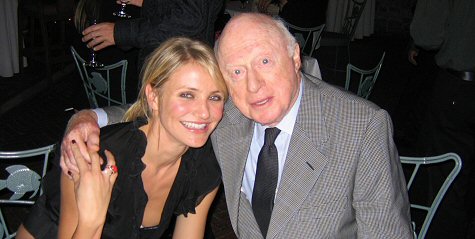
Cameron Diaz, Norman Lloyd at In Her Shoes post-premiere party at Spago of Beverly Hills — Wednesday, 9.28, 11:40 pm.
I was certain that Lloyd would be unusual and inquisitive enough to be an internet expert, but no. He is, however, a “careful” newspaper reader. As a favor I agreed to print out a copy of this column and give it to him at Wednesday night’s (9.28) In Her Shoes after-party.
Does he ever get recognized in public? “Of late not so much,” he says. “I was recognized in the `40s after Saboteur came out, and in the ’80s occasionally because of my part in St. Elsewhere (i.e., “Dr. Auschlander”), which I did every week for six years.
“But just the other day I was in a Chinese restaurant — VIP Harbor Seafood at the corner of Wilshire and Barrington — and six guys from 20th Century Fox who had just seen the film…they all came over to congratulate.”
Plays High, Sold Low
In Her Shoes may or may not be appearing to handicappers as an awards-level thing. I don’t care to argue this point, but every so often there’s a disconnect between my views and those of jaded ivory-tower elites that just staggers me.
On the other hand, if I hadn’t yet seen it and had come upon Liz Smith’s rave on the film’s website, I might have a moment of pause. Smith guarantees “you will laugh and cry in equal measure because this is simply a wonderful film…one of the best in years” — fine.

(l. to. r.) Variety screening series host Pete Hammond, In Her Shoes star Toni Collette, and director Curtis Hanson during post-screenign q & a at Hollywood’s Arclight — Monday, 9.26, 9:50 pm.
But then she raves, “When you see a movie that looks this good from the get-go, you just know you’re in for a terrific time.” I know what Smith is trying to say, but “looks” aren’t worth a damn in the eyes of Sri Vishnu, and a promise of cosmetic attractiveness usually implies a lack of inner character.
Trust me, In Her Shoes is much better than this.
I know the film has been working on an emotional level at the screenings I’ve attended, and so does 20th Century Fox or they wouldn’t be giving it another nationwide sneak this weekend…the movie sells itself.
The cynical view is that they’re doing two sneaks in a row because they can’t figure out how to get the word out otherwise, as indicated by the fact that it opens in less than two weeks and it isn’t really tracking. (Although that may change with Thurs- day’s tracking report, which will reflect last weekend’s sneak.)
I think year-end critics awards will help. I know Oscar watchers will be surprised if Toni Collette doesn’t catch on as a Best Actress contender; ditto Shirley MacLaine for Best Supporting Actress.
And if you ask me Norman Lloyd’s brief but elegant turn as a blind and bedridden hospital patient easily warrants a Best Supporting Actor nom.

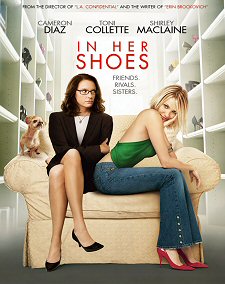
The Diaz-only “teaser” one-sheet for In Her Shoes (l.) and the far less visible Collette-Diaz version that gives both plus Shirley Maclaine a shared aboe-the-title billing
Lloyd has been acting and producing all his life (he had an ongoing role as a staff doctor on St. Elsewhere in the `80s), but his In Her Shoes turn is the charm. His gentle, sharp-witted ex-college professor — a performance that takes off and comes in for a landing in the space of a single scene — is the most memorable thing he’s done since Frank Fry in Saboteur (’42). It’s a comeback after 63 years.
For the first 40 minutes or so, Cameron Diaz doesn’t seem to be doing much more than playing her standard ditz-babe, but once she arrives in Florida and hooks up with MacLaine things start to improve. Then she meets up with Lloyd and performs her best scene in the film, and does herself proud.
But there’s no washing away the stain of The Sweetest Thing and the two Charlie’s Angels films. In my heart and mind those three were abominations…war crimes. Granted, there’s a balance factor from Diaz’s work in Vanilla Sky, Any Given Sunday and There’s Something About Mary, but any and all McG associations must be condemned in perpetuity.
The only other thing throwing me is that Fox is still using that one-sheet with just Diaz alone on their official site. Once again, big studio marketers are selling an idea they think will put arses in seats (hey, girls-who-buy-In Touch-and-Us in the supermarket…another giggly-ditzoid Cameron Diaz film!) instead of selling the movie they have.
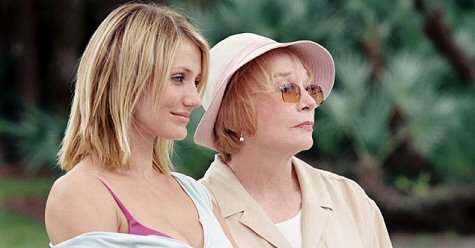
Diaz, Shirley Maclaine
I was under the impression that the Diaz one-sheet was just a teaser poster and that the real In Her Shoes one-sheet (with Collette and Diaz pictured side-by-side, and their names along with MacLaine’s sharing above-the-title space) was the keeper.
Diaz is the one they paid $15 million-plus to star in this movie, and nobody really knows Collette, etc., but I still don’t get it. This is a really good sister movie…a heart movie…and Fox seems to be trying to dissuade people who like this sort of thing (including sophisticated filmgoers) from putting this film on the top of their lists.
Then again I’m told that last weekend’s sneak was well attended, and reactions have been very good. This is primarily a woman’s film, and naturally Fox is going to pitch to the core constituency.
“You like the picture, fine…and men may like it,” a marketing guy told me this morning. “But women love it.”
In the hands of Gary David Goldberg (Must Love Dogs), Roger Kumble (The Sweetest Thing), Audrey Wells (Under the Tuscan Sun) or the evil McG, In Her Shoes would have almost certainly been a lesser thing.
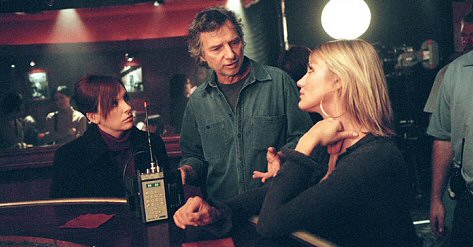
Toni Collette, Curtis Hanson and Cameron Diaz preparing to shoot a first-act, out-on-the-town scene
But Fox went with Curtis Hanson, and that decision — combined with Susannah Grant’s way-above-average chick-flick script (based on the novel by Jennifer Weiner) — has made a big difference.
Hanson has brought the same sureness of tone, knack for economical story-telling and clarity of presentation evident in 8 Mile, Wonder Boys and L.A. Confidential to this thing. It’s a film that’s been expertly finessed and perfectly music-cued and made to feel emotionally grounded.
And the point is made again — it’s the singer, not the song.
Regarding Violence
If you’ve seen David Cronenberg’s A History of Violence, you know it’s a philosophical double-dealer, and this is what makes it a complex, cut-above film. It’s not just saying violence is a kind of terrible virus — it’s also saying it has a way of turning us on.
When Jack (Ashton Holmes), the son of cafe owner Tom Stall (Viggo Mortenson), defuses a potentially violent encounter with a school bully by sarcastically acknow- ledging the other guy’s alpha male superiority, etc., you admire Jack for being a hip and clever guy.
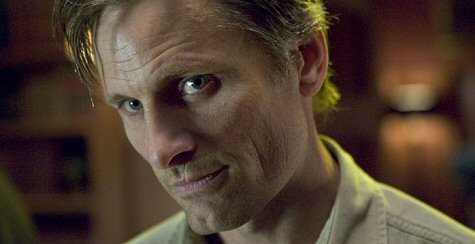
Viggo Mortenson as small-town nice guy Tom Stall in David Cronenberg’s A History of Violence
But when they meet a second time and Jack, inspired by his father’s having become a hero because he killed a couple of bad guys, wails on the bullies and leaves them bruised and groaning, several people in the theatre (at L.A.’s Grove plex) were clapping and whoo-whooing.
Is there anyone out there who thinks Cronenberg didn’t deliver this scene in just the right way so he would get this reaction?
And of course, the steam that comes hissing out of Edie Stall (Maria Bello) isn’t just about feelings of betrayal.
Edie is furious, naturally, when she realizes her husband has been lying to her for years about his past. But when she and Tom have that end-of-Act-Two fight and she goes “fuck you, Joey” and walks off and Tom grabs her by the ankle and they do that thing on the stairs (a scene that wasn’t scripted, by the way…it just “happened” when they shot it), it’s obvious that Tom’s killer moves have lit a fire in Edie’s furnace.
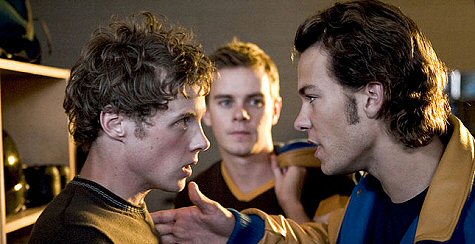
Jack Stall (Ashton Holmes) and the high-school baddies
And yet the violence that has happened has obviously stunned and hurt this family of four. In that haunting final scene, Cronenberg shows us that Jack and his younger sister are willing to forgive and forget as they offer food to Tom, but there’s not much assurance that things will henceforth be fine…Cronenberg leaves us in limbo.
That’s filmmaking, pally. Lob the ball to the audience in the final frame and let them sort it all out…nice.
One beef with this film: Peter Suschitzky’s cinemography looks like it was soaked in Bolivian coffee during lab processing. I started to wonder if the projector lamp at the Grove’s theatre #1 was dying, but the lamps in the other theatres were fine. The last film I remember being this muddy-looking was Fight Club.
Grabs
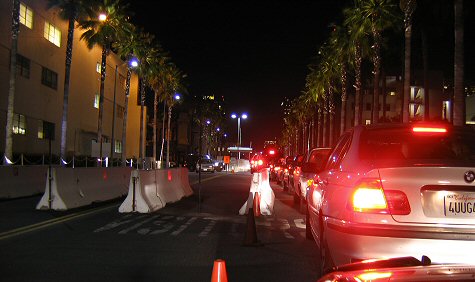
Waiting in a very long line of cars trying to get onto the Fox lot for Tuesday night’s screening of Domino — 9.27, 7:25 pm.

Wilshire and Brockton on Sunday, 9.25, 4:50 pm…following a long bike ride from Brentwood to Venice and back, which I was very glad to do because it caused me to re-realize how much nicer, cleaner and more aesthetically pleasant Santa Monica and Venice are than the shittier areas of Williamsburg, Brooklyn. Okay, so the spiritual element isn’t as vibrant here as it is in New York City, but the women are dishier and the leaves are bigger and more plentiful, and the sea smells better standing on the beach in Santa Monica than it does in Far Rockaway

Taken from the vantage point of the Beverly Hills Public Library on Santa Monica Blvd., and looking northeast — Sunday, 9/25, 6:15 pm.












